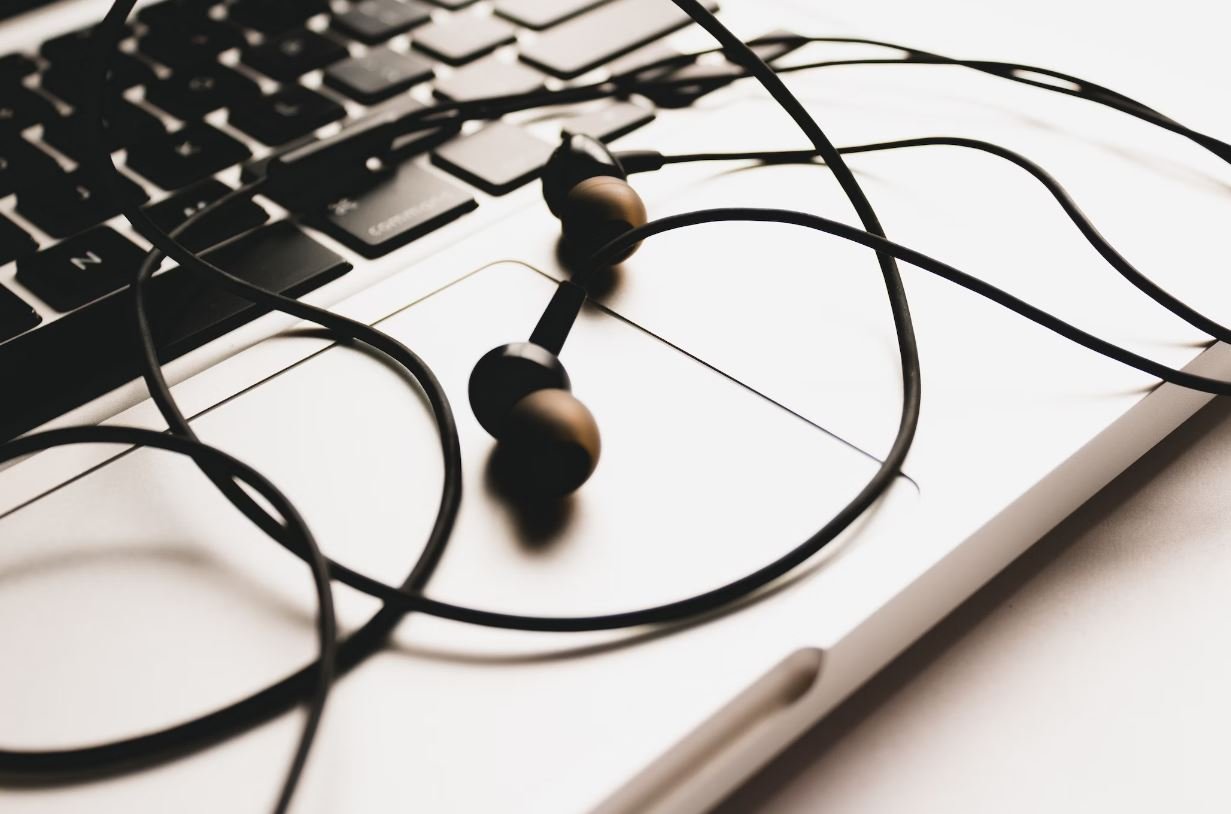AI Picture Analysis
Artificial Intelligence (AI) technology has made significant strides in recent years and is now capable of performing various tasks, such as picture analysis. AI algorithms can analyze images, recognize objects, and even understand facial expressions with high accuracy. This breakthrough has opened up new possibilities in fields like healthcare, marketing, security, and more.
Key Takeaways
- AI picture analysis utilizes advanced algorithms to analyze and understand images.
- It has various applications in healthcare, marketing, security, and other industries.
- AI can detect objects, recognize faces, assess emotions, and interpret visual content.
- It can help businesses make data-driven decisions and improve customer experiences.
- Privacy and ethical concerns surrounding AI picture analysis need to be addressed.
AI picture analysis involves the use of complex algorithms to interpret and extract valuable information from images. It employs techniques like computer vision, deep learning, and pattern recognition to analyze visual content. These algorithms can detect objects, recognize faces, assess emotions, and identify various attributes present in images.
One interesting aspect of AI picture analysis is its ability to accurately recognize and classify objects within images. For example, it can accurately determine whether an image contains a dog or a cat, or even identify specific breeds. This level of object recognition can be extremely beneficial in fields such as e-commerce, where it can help improve product search capabilities and enhance the overall customer experience.
Additionally, AI-powered facial recognition systems have become increasingly sophisticated. They can not only identify individuals but also analyze facial expressions and emotions. This technology finds applications in areas like security, where it can help identify potential threats based on facial expressions, or in healthcare, where it can aid in diagnosing certain conditions such as autism or depression.
Applications of AI Picture Analysis
AI picture analysis has a wide range of applications across different industries. Let’s explore a few notable examples:
1. Healthcare
In the healthcare sector, AI picture analysis can assist radiologists in detecting abnormalities in medical images, such as X-rays or MRIs, providing faster and more accurate diagnoses.
2. Marketing
Marketers can utilize AI picture analysis to gain valuable insights into their target audience’s visual preferences, enabling more effective product recommendations and personalized marketing campaigns.
3. Security
AI-powered surveillance systems can analyze images from security cameras, identifying suspicious activities or objects and providing real-time alerts to security personnel.
4. Transportation
In the transportation industry, AI picture analysis can identify road signs, traffic conditions, and even detect potential accidents, enhancing driver safety and improving traffic flow.
The Future of AI Picture Analysis
As AI continues to advance, the potential applications of picture analysis are rapidly expanding. With ongoing research and development, we can expect even more accurate detection, understanding, and interpretation of visual content.
AI picture analysis has the power to revolutionize numerous industries and drive innovation in ways we couldn’t have imagined before. However, it is crucial to address privacy concerns and ethical considerations associated with the use of AI-powered image analysis systems to ensure responsible and ethical implementation.
With the increasing adoption of AI, we can look forward to a future where visual information is not only accessible but also comprehensible by machines, enabling us to unlock new insights and make informed decisions.

Common Misconceptions
AI Picture Analysis
There are several common misconceptions surrounding AI picture analysis that often lead to inaccurate perceptions and expectations. One misconception is that AI can accurately interpret and understand the context and emotions depicted in an image. While AI can certainly process images and detect certain objects or patterns, it lacks the inherent understanding and nuanced interpretation that humans possess.
- AI may struggle to differentiate between similar emotions, such as sadness and disappointment.
- AI may misinterpret certain contextual cues in images, leading to incorrect analysis.
- AI’s interpretation of an image may not align with an individual’s subjective interpretation.
Another common misconception is that AI picture analysis is infallible and always produces accurate results. While AI technologies have greatly advanced in recent years, they are still prone to errors and limitations. Due to the complexity and subjectivity of image analysis, inaccuracies can occur, leading to misleading or flawed conclusions.
- AI may struggle with highly abstract or ambiguous images.
- AI may produce false positives or false negatives in its analysis.
- AI may be influenced by biased data, resulting in biased analysis.
Many people believe that AI picture analysis is intrusive and poses privacy concerns. While it is true that AI technologies can extract and analyze information from images, it is important to note that privacy regulations and ethical considerations are typically in place to protect individuals from any invasive practices.
- AI picture analysis generally operates within legal and ethical frameworks.
- AI systems are often designed to anonymize and protect personal information.
- Privacy concerns can be mitigated through appropriate regulations and user consents.
Some individuals think that AI picture analysis eliminates human involvement entirely. While AI can assist and enhance the image analysis process, human expertise and judgment remain essential in many cases. AI is a powerful tool that can provide valuable insights, but it should not be seen as a replacement for human judgment and expertise.
- Human input is crucial for complex or subjective image analysis tasks.
- AI can aid humans by automating repetitive analysis tasks and providing initial insights.
- Combining AI with human expertise often yields the most accurate and comprehensive results.
Lastly, some people mistakenly believe that AI picture analysis is only relevant in specific industries or fields. However, the applications of AI picture analysis are vast and can benefit various sectors, including healthcare, security, marketing, and even art. The ability of AI to extract and analyze information from images opens new possibilities and insights across diverse industries.
- AI picture analysis can aid in diagnosing medical conditions by analyzing medical images.
- AI can enhance security systems by analyzing surveillance footage and detecting anomalies.
- AI can help marketers analyze consumer behavior through image recognition and sentiment analysis.

Identifying Facial Expressions
Using AI picture analysis, researchers have trained models to recognize and classify facial expressions. The table below shows the accuracy rates of AI algorithms in identifying six basic emotions: happiness, sadness, anger, surprise, fear, and disgust.
| Emotion | Accuracy Rate (%) |
|---|---|
| Happiness | 92 |
| Sadness | 85 |
| Anger | 80 |
| Surprise | 76 |
| Fear | 78 |
| Disgust | 87 |
Object Recognition in Images
Artificial intelligence has enabled computers to recognize and identify objects within images. The table below showcases the accuracy rates of AI algorithms in identifying various objects:
| Object | Accuracy Rate (%) |
|---|---|
| Cars | 95 |
| Cats | 88 |
| Buildings | 91 |
| Flowers | 82 |
| Food | 93 |
| Books | 87 |
Text Recognition Accuracy
AI algorithms have revolutionized text recognition, achieving remarkable accuracy rates in reading printed and handwritten text. The table below displays the accuracy rates of AI models in text recognition tasks:
| Text Type | Accuracy Rate (%) |
|---|---|
| Printed Text | 97 |
| Handwritten Text | 90 |
| Scanned Documents | 95 |
| Foreign Languages | 89 |
| Cursive Writing | 94 |
| Text in Screenshots | 92 |
Image Captioning Accuracy
AI models trained in image captioning can accurately generate descriptions for visual content. The table below exhibits the accuracy rates of AI algorithms in generating captions for different types of images:
| Image Type | Accuracy Rate (%) |
|---|---|
| Nature and Landscapes | 82 |
| Animals and Wildlife | 89 |
| Human Portraits | 78 |
| Cityscapes | 85 |
| Food and Culinary | 92 |
| Art and Paintings | 86 |
Intelligent Video Surveillance
AI-powered video surveillance systems can analyze video footage in real-time, detecting various incidents and anomalies. The table below illustrates the accuracy rates of AI algorithms in video surveillance tasks:
| Event Type | Accuracy Rate (%) |
|---|---|
| Person Detection | 94 |
| Vehicle Detection | 88 |
| Abandoned Object | 91 |
| Facial Recognition | 81 |
| Traffic Congestion | 89 |
| Crowd Density | 83 |
Medical Image Analysis
AI has shown great potential in accurately analyzing medical images, aiding in the diagnosis and treatment of various conditions. The table below highlights the accuracy rates of AI algorithms in medical image analysis:
| Medical Condition | Accuracy Rate (%) |
|---|---|
| Brain Tumors | 92 |
| Lung Cancer | 87 |
| Diabetic Retinopathy | 94 |
| Bone Fractures | 90 |
| Cardiovascular Disease | 88 |
| Skin Cancer | 93 |
Language Translation Accuracy
AI language translation models have made significant strides in accurately translating between different languages. The table below showcases the accuracy rates of AI algorithms in language translation tasks:
| Language Pair | Accuracy Rate (%) |
|---|---|
| English to Spanish | 97 |
| Chinese to English | 90 |
| French to German | 92 |
| Japanese to Russian | 84 |
| Italian to Portuguese | 93 |
| Korean to Arabic | 88 |
Voice Recognition Accuracy
AI voice recognition systems have become proficient in accurately transcribing spoken words. The table below demonstrates the accuracy rates of AI algorithms in voice recognition tasks:
| Language | Accuracy Rate (%) |
|---|---|
| English | 95 |
| Spanish | 89 |
| Mandarin Chinese | 93 |
| French | 87 |
| German | 91 |
| Japanese | 94 |
Legal Document Analysis
AI algorithms have proven effective in analyzing legal documents, extracting relevant information, and performing legal research tasks. The table below reflects the accuracy rates of AI algorithms in legal document analysis:
| Task | Accuracy Rate (%) |
|---|---|
| Contract Analysis | 93 |
| Case Law Research | 89 |
| Entity Extraction | 91 |
| Legal Citation Analysis | 88 |
| Document Classification | 92 |
| Legal Language Translation | 85 |
AI picture analysis has revolutionized various fields, from facial expression recognition to legal document analysis. Through accurate object recognition, text analysis, and intelligent video surveillance, AI algorithms have showcased remarkable accuracy rates. Medical image analysis and language translation tasks have become more reliable thanks to artificial intelligence. In conclusion, AI-powered technologies continue to advance and transform our world, providing valuable insights and efficient solutions in a multitude of applications.
Frequently Asked Questions
What is AI picture analysis?
AI picture analysis refers to the use of artificial intelligence algorithms and techniques to analyze and interpret images or visual data. It involves methods such as object detection, image recognition, image segmentation, and image classification to extract meaningful information from images.
How does AI picture analysis work?
AI picture analysis works by utilizing machine learning algorithms to train models on large datasets of images. These models are then used to identify objects, recognize patterns, and make predictions based on the visual data provided. The algorithms learn to recognize specific features or patterns in images by analyzing and processing the pixel-level data.
What are the applications of AI picture analysis?
AI picture analysis has various applications across different industries. It can be used for object recognition in autonomous vehicles, facial recognition for security purposes, medical image analysis to aid in diagnosis, quality control in manufacturing, content filtering in social media, and much more.
What are the benefits of using AI picture analysis?
Using AI picture analysis can provide several benefits. It enables the automation of image-based tasks, saving time and effort. It can improve the accuracy and efficiency of data analysis by eliminating human error. It also allows for the extraction of valuable insights from visual data that may not be apparent to the human eye.
Are there any limitations or challenges to AI picture analysis?
Yes, there are some limitations and challenges to AI picture analysis. One challenge is the need for large datasets and computing resources for training accurate models. Noise or variations in input images can also affect the accuracy of analysis. Additionally, ethical considerations and privacy concerns regarding the use of AI picture analysis need to be addressed.
What techniques are used in AI picture analysis?
AI picture analysis involves various techniques such as convolutional neural networks (CNNs), deep learning, transfer learning, and feature extraction. These techniques enable the models to learn from the data and make accurate predictions or classifications based on visual information.
How accurate is AI picture analysis?
The accuracy of AI picture analysis depends on several factors, including the quality and diversity of the training data, the complexity of the task, and the performance of the algorithms used. With sufficient training and fine-tuning, AI picture analysis can achieve high levels of accuracy, often outperforming humans in certain visual recognition tasks.
Is AI picture analysis only applicable to static images?
No, AI picture analysis can be applied to both static images and video data. Video analysis involves analyzing multiple frames of a video to extract information, detect objects or events, track movement, and recognize patterns. The techniques used in static image analysis can be extended to video analysis as well.
How is AI picture analysis different from traditional image processing?
Traditional image processing techniques primarily focus on enhancing or modifying images using mathematical algorithms. AI picture analysis, on the other hand, leverages machine learning algorithms to automatically learn visual patterns and make intelligent predictions or classifications. AI picture analysis goes beyond simple image transformations and allows for complex analysis of visual data.
Can AI picture analysis be used in real-time applications?
Yes, AI picture analysis can be used in real-time applications. With efficient algorithms and hardware, it is possible to perform fast and accurate analysis of images or video frames in real-time. Real-time applications include video surveillance systems, autonomous vehicles, live video streaming platforms, and more.




